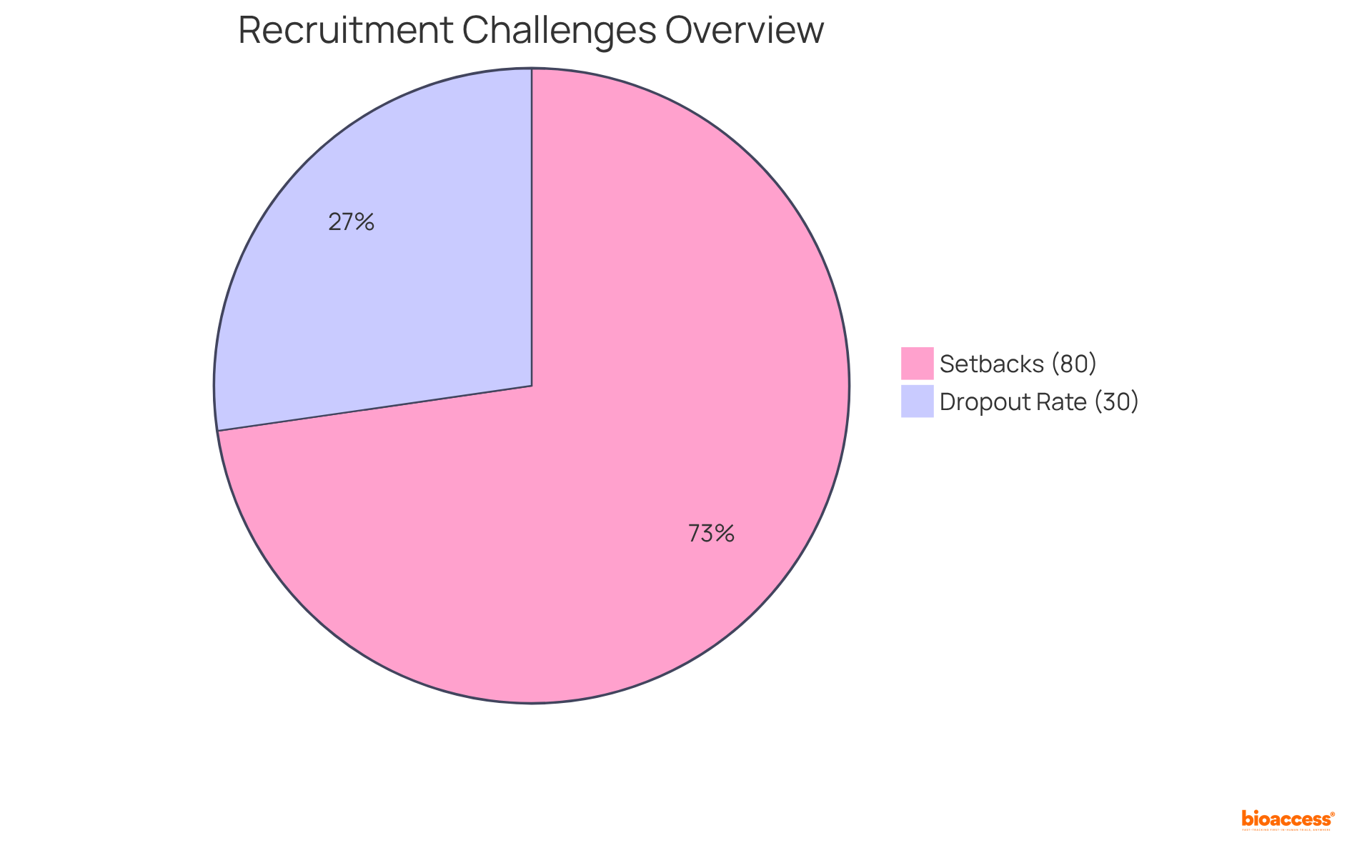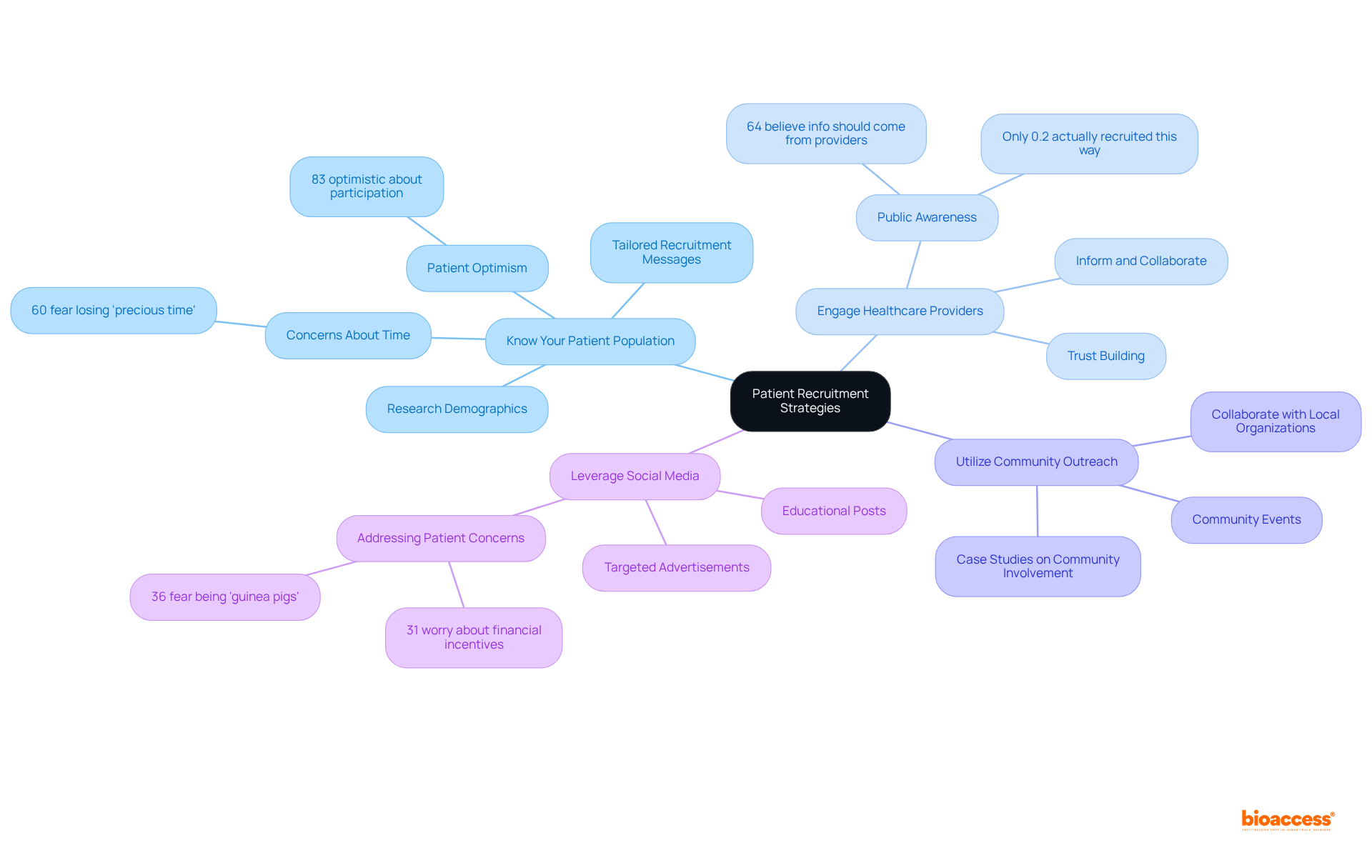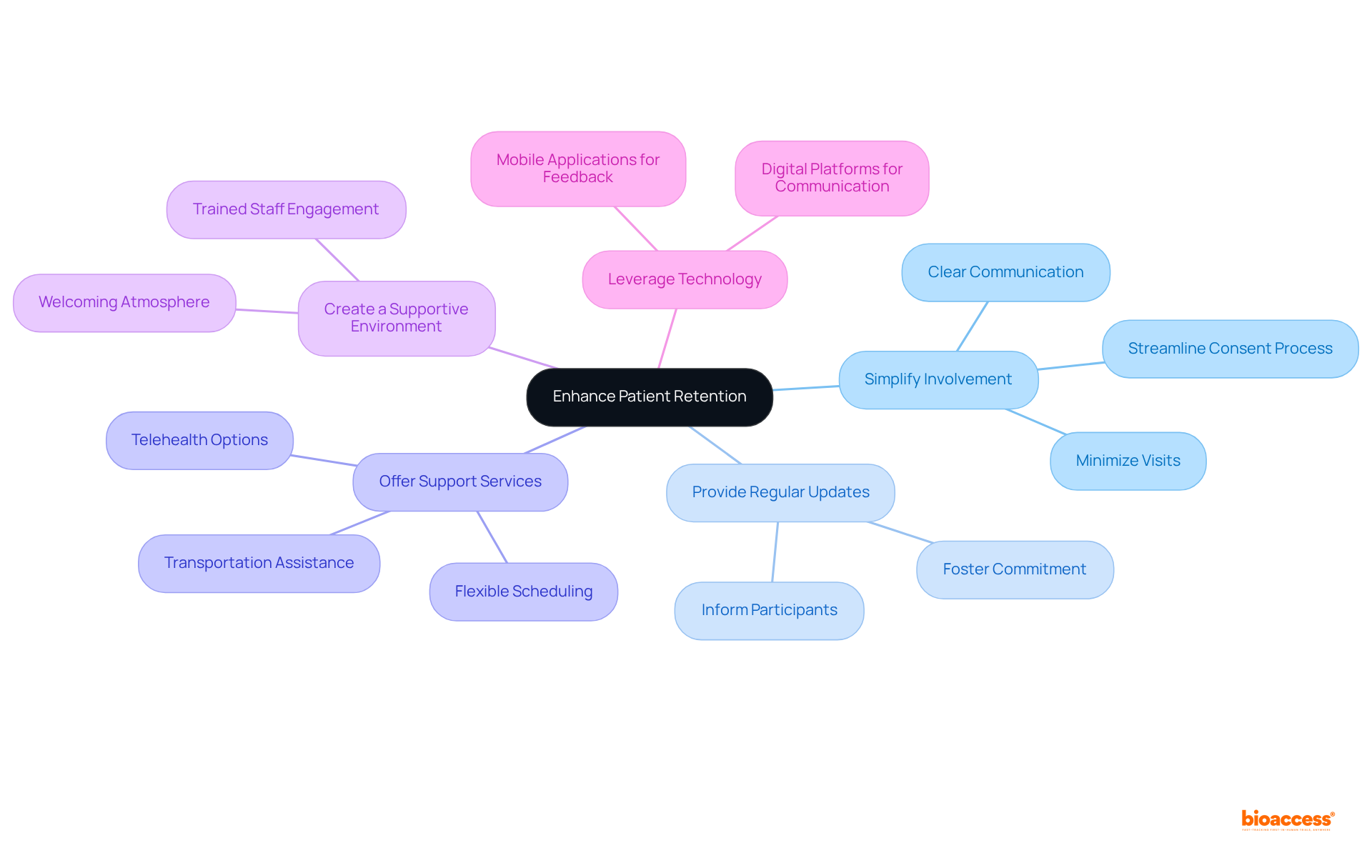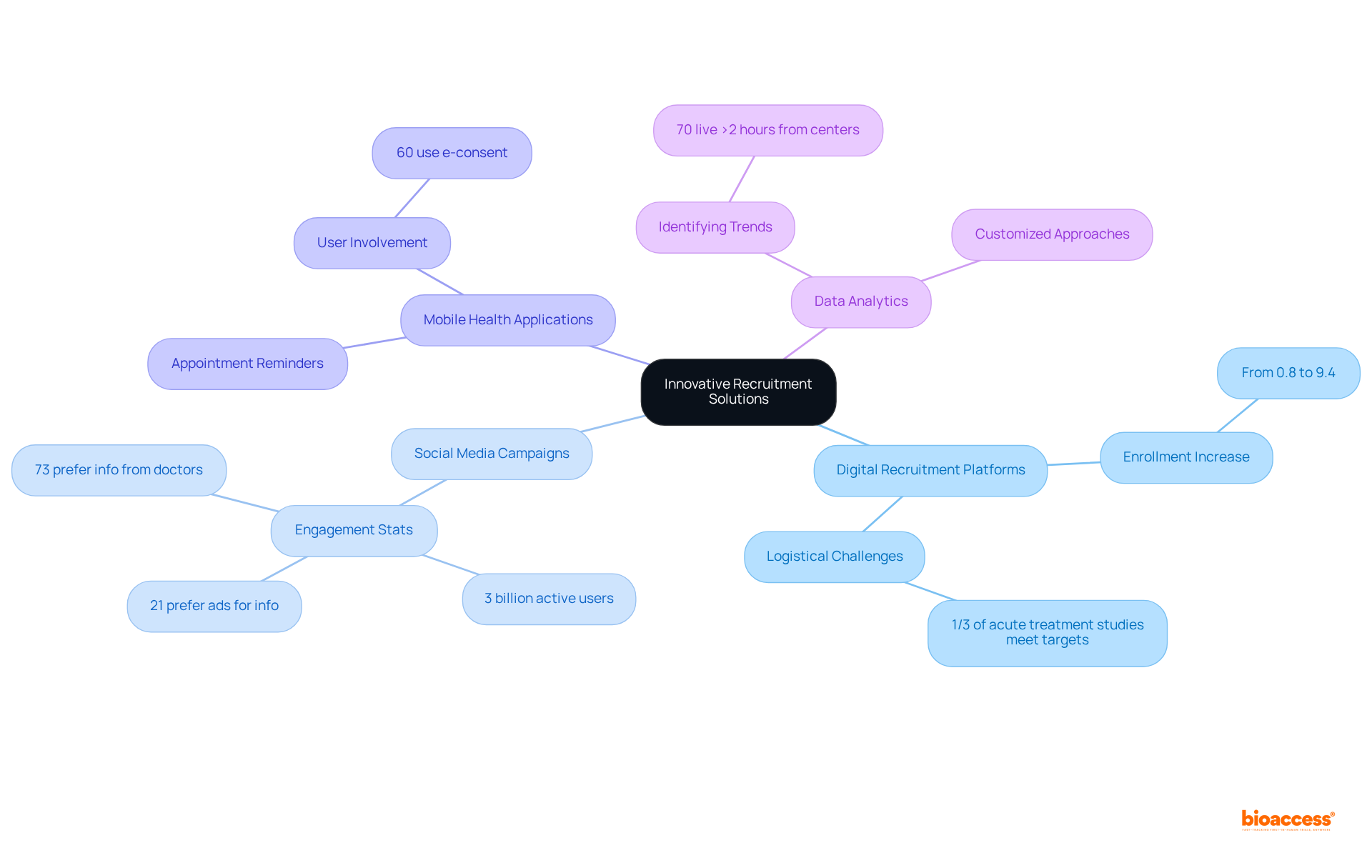


The article delineates effective strategies for patient recruitment in clinical trials, underscoring the critical nature of addressing recruitment challenges to secure successful study outcomes. It articulates essential approaches, including:
Collectively, these strategies are designed to enhance recruitment rates and bolster participant retention in clinical studies.
The success of clinical trials hinges on a critical yet often overlooked element: patient recruitment. With approximately 80% of studies facing delays due to recruitment challenges, it is imperative to explore effective strategies that not only attract participants but also keep them engaged throughout the process.
As the landscape of clinical research evolves, questions arise about how to leverage innovative approaches and technology to enhance recruitment efforts. What methods can be employed to bridge the gap between potential participants and the clinical trials that need them?
The success of clinical studies heavily relies on patient recruitment for clinical trials, which significantly influences the reliability of information and the timelines for study completion. Inadequate hiring can result in delays, increased costs, and even failed trials.
Studies indicate that approximately 80% of clinical studies encounter setbacks due to patient recruitment for clinical trials issues, underscoring the urgent need to address this challenge. Additionally, a notable dropout rate of 30% highlights the critical importance of sustaining participant engagement throughout the study process.
To develop effective strategies for patient recruitment for clinical trials, it is essential to understand the target population and their specific needs. Engaging healthcare professionals and community groups not only raises awareness but also enhances patient recruitment for clinical trials, ultimately leading to more successful study outcomes.
As Eian Kantor noted, only 32% of individuals reported that their doctors had ever informed them about clinical trials, revealing a significant opportunity for improvement in communication.
Case studies have shown that innovative hiring techniques, including digital tools and community outreach, can markedly enhance patient recruitment for clinical trials and reduce delays, demonstrating the importance of a strategic approach to participant engagement.

To enhance patient recruitment, consider the following strategies:
Know Your Patient Population: Conduct comprehensive research to grasp the demographics, preferences, and concerns of potential participants. Tailoring recruitment messages to resonate with these groups can significantly improve engagement. Recognizing that 83% of individuals are optimistic about engaging in clinical studies underscores the opportunity for patient recruitment for clinical trials. Furthermore, it is essential to tackle concerns, as 60% of individuals feared losing 'precious time' by participating, which can be alleviated through clear communication regarding the trial's timeline and advantages.
Engage Healthcare Providers: Inform and collaborate with physicians and healthcare professionals who can refer eligible individuals. Building strong relationships with these professionals fosters trust and increases referrals. Notably, while 64% of the public believes they should learn about clinical research from primary care providers, only 0.2% are actually participating in patient recruitment for clinical trials this way, indicating a critical area for improvement. As Matt Teuteberg, CEO of Splash Clinical, notes, "Trials are intended to generate data on how a drug works and you can’t generate that data if you don’t have participants in the study."
Utilize Community Outreach: Collaborate with local organizations and patient advocacy groups to raise awareness about the study. Community events and informational sessions can help demystify the trial process and encourage participation. Interacting with these groups can bridge gaps in understanding and improve hiring initiatives. Case studies, like those emphasizing the role of research locations in patient enrollment, illustrate the effectiveness of community involvement in hiring strategies.
Leverage Social Media: Use social media platforms to reach a broader audience. Targeted advertisements and educational posts can draw in possible individuals who might not be aware of the research opportunities accessible to them. Digital media has changed clinical study enrollment, enabling engaging and ongoing interaction with participants, which is crucial for optimizing enrollment success. By incorporating these contemporary techniques, experiments can tackle frequent challenges, such as the anxiety of being regarded as 'guinea pigs' (36% of patients) or worries regarding financial incentives (31%).

Patient recruitment for clinical trials is as essential as patient retention in clinical studies. To enhance retention, consider the following effective practices:
Simplify Involvement: Minimize the burden on contributors by reducing the number of visits and streamlining the consent process. Clear communication about expectations can significantly alleviate anxiety and enhance understanding.
Provide Regular Updates: Keeping participants informed about the study's progress and their contributions fosters a sense of involvement and commitment. Regular communication has been shown to enhance retention rates and reduce drop-out rates.
Offer Support Services: Address logistical barriers by providing transportation assistance, flexible scheduling, and access to telehealth options. These services can significantly enhance participation rates by facilitating easier engagement for patients with the study.
Create a Supportive Environment: Establish a welcoming atmosphere at trial sites. Staff should be trained to engage positively with participants, addressing their concerns and making them feel valued. A supportive environment can lead to greater satisfaction and retention among individuals receiving care. As Francis Peabody observed, true healing entails sincerely caring for the individual's well-being.
Leverage Technology: Utilize digital platforms for real-time communication and feedback. Mobile applications can monitor participant sentiment and promote continuous involvement, ensuring that individuals feel connected and supported throughout the research process. Research suggests that 78% of actively involved participants reported a positive effect on their overall experience, emphasizing the significance of these engagement strategies.
Incorporating these practices can lead to patient recruitment for clinical trials that is 50% faster than traditional markets, demonstrating the effectiveness of a patient-centered approach.

Technology is revolutionizing approaches to patient recruitment for clinical trials. This shift is essential for enhancing engagement and enrollment rates. Here are key approaches to harness its potential:
Digital Recruitment Platforms: Leverage online platforms that efficiently connect patients with clinical trials. These tools can significantly expedite the identification of eligible participants, enhancing enrollment rates. For instance, a study highlighted that targeted digital hiring strategies increased enrollment rates from 0.8% to 9.4%, showcasing their effectiveness. Significantly, only one-third of acute treatment studies achieve their targeted number of participants within the planned timeframe, underscoring the challenges encountered in recruitment.
Social Media Campaigns: Implement targeted social media initiatives to engage specific demographics. With over 3 billion individuals actively engaging on platforms such as Facebook and Instagram, customized content can successfully increase awareness and promote involvement among prospective candidates. Notably, 21% of individuals prefer to learn about studies through advertisements, while 73% favor receiving information about research opportunities from their doctor's office, emphasizing the importance of strategic outreach.
Mobile Health Applications: Create or utilize current mobile applications that enhance user involvement by providing details about ongoing studies. These apps can send reminders for appointments and follow-ups, ensuring participants remain informed and engaged throughout the trial process. The incorporation of mobile technology has been shown to improve monitoring of individuals and simplify communication. Additionally, 60% of platforms have integrated electronic consent forms, indicating a trend towards digital tools in enhancing client engagement.
Data Analytics: Utilize data analytics to identify trends and optimize hiring strategies. Analyzing individual data enables customized approaches that resonate with specific groups, ultimately improving enrollment outcomes. For example, employing analytics can help address the logistical challenges faced by 70% of potential participants who reside more than two hours from study centers, thereby enhancing accessibility.
By adopting these innovative strategies, clinical trial sponsors can significantly improve patient recruitment and engagement, ultimately leading to more successful trial outcomes.

Effective patient recruitment stands as the cornerstone of successful clinical trials, profoundly influencing the quality of data collected and the overall success of research initiatives. With a staggering 80% of clinical studies experiencing delays due to recruitment challenges, it is essential to adopt strategic approaches that not only attract participants but also sustain their engagement throughout the study. By prioritizing clear communication, community involvement, and innovative outreach methods, clinical trial sponsors can significantly enhance their recruitment efforts and ultimately improve study outcomes.
Las estrategias clave incluyen:
Engaging healthcare professionals to raise awareness and employing digital tools for targeted outreach are crucial steps toward overcoming recruitment barriers. Furthermore, focusing on patient retention through supportive practices and regular communication can drastically reduce dropout rates, ensuring that trials meet their objectives.
The significance of effective patient recruitment cannot be overstated. As the clinical research landscape evolves, embracing innovative solutions and prioritizing patient-centered approaches will be vital in addressing ongoing challenges. By implementing these strategies, stakeholders can not only enhance the efficiency of clinical trials but also contribute to the advancement of medical research, ultimately benefiting patients and the healthcare system as a whole.
Why is patient recruitment important in clinical trials?
Patient recruitment is crucial because it significantly influences the reliability of information obtained from clinical studies and affects the timelines for study completion. Inadequate recruitment can lead to delays, increased costs, and even failed trials.
What percentage of clinical studies face issues related to patient recruitment?
Approximately 80% of clinical studies encounter setbacks due to patient recruitment issues.
What is the dropout rate for participants in clinical trials?
The dropout rate for participants in clinical trials is about 30%.
How can understanding the target population improve patient recruitment?
By understanding the target population and their specific needs, researchers can develop effective recruitment strategies that engage potential participants and enhance overall recruitment efforts.
What role do healthcare professionals and community groups play in patient recruitment?
Engaging healthcare professionals and community groups raises awareness about clinical trials and enhances patient recruitment, ultimately leading to more successful study outcomes.
What did Eian Kantor's findings reveal about communication regarding clinical trials?
Eian Kantor noted that only 32% of individuals reported that their doctors had ever informed them about clinical trials, indicating a significant opportunity for improvement in communication.
What innovative techniques can enhance patient recruitment for clinical trials?
Innovative hiring techniques, such as using digital tools and community outreach, can markedly enhance patient recruitment and reduce delays in clinical trials.